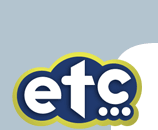



Is "Telescoping" The Solution to Advertisers' Concerns with TV?
By Jerry Weinstein
A recent Association of National Advertisers survey found that seventy percent of its
membership believes that DVRs will destroy the thirty-second ad. TV viewers'
expanding ability to skip commercials is the driving force behind advertisers'
demands for commercial - rather than program - ratings. And they are the catalyst
for an active search by TV industry executives for new ways to engage viewers more
actively with advertisers' messages.
 Even as this mood of sturm und drang pervades, there is a rising
drumbeat in support of telescopic advertising as a solution that
enables brands to ratchet up ad recall, deepen relationships with
consumers, and most of all, realize greater accountability while
actually increasing their investments in TV advertising. In effect,
executives believe, thirty-second (and shorter) ads will be
deployed as a "gateway drug" to long-form permission-based
advertising.
Even as this mood of sturm und drang pervades, there is a rising
drumbeat in support of telescopic advertising as a solution that
enables brands to ratchet up ad recall, deepen relationships with
consumers, and most of all, realize greater accountability while
actually increasing their investments in TV advertising. In effect,
executives believe, thirty-second (and shorter) ads will be
deployed as a "gateway drug" to long-form permission-based
advertising.
What exactly is telescopic advertising? Broadly speaking, it's an
interactive system that puts control firmly in the hands of the viewer. If viewers catch
a thirty-second ad for, say, a Ford Expedition during 24, and it strikes their fancy,
they can use their TV remote buttons to easily drill down for more expansive content.
They can select a long-form video, bookmark it for later viewing, and return to the
show, thanks to either DVR buffering or (in the case of emerging company etc.tv)
storage at the cable system head-end, without missing a beat. Telescoping becomes
especially enticing for advertisers in behaviorally targeted programming with strong
emotional ties to viewers' passions, such as Food Network, HGTV, Golf Network,
CNBC and ESPN.
A pioneer in this regard was TiVo, which began offering "Showcase" advertisements
as early as 2002. In recent months the emerging telescoping model has been touted
by everyone from Forrester Research to NBC Universal's Beth Comstock. It is in its
infancy at UK-based BskyB and is being piloted at Dish Network by its sales
organization, The Media Group with charter advertisers such as Chase Manhattan.
The early (academic and market) research has been supportive as well. It holds that
the longer the ad, the greater opportunity of reaching a consumer. That is, until an
ad hits the fifteen-minute mark, then it's diminishing returns. In addition, cognitive
dissonance theory suggests that when a viewer is offered both choice and
interactivity that they generally drill down into an ad message, with a rationale that
the time spent will be justifiable. (Source: Journal of Advertising Research, 1 June
2006.)
While the aforementioned companies have been taking tentative steps, Canadianbased
etc.tv, has adopted telescopic ads as its core competency. Etc.tv was founded
by Mark Sherman, also CEO of Media Experts, the largest independent media-buying
firm in Canada. Sherman's inspiration was a 1999 Jack Myers Forum for Interactive
TV Development which he attended. In an exclusive interview, Sherman told Jack
Myers Media Business Report, "I left the event and thought, 'You know what? I'm
gonna change TV.'" In the world according to Sherman, "CPM is Cost-Per-Maybe, and
telescopic advertising will bring brands back to television while offering them the
accountability they've been seeking with their Web-drifting ad dollars."
Last year, etc.tv staged an April trial via Quebec's Vidéotron Telecom and then
launched the service in the fall with an A-list of advertisers including P&G, Unilever,
Ford, Daimler-Chrysler, GM, Molson, and Sony Pictures Entertainment. Etc.tv
is in active discussions to expand within Canada and Sherman and his team have
been meeting with executives from U.S. cable operators, networks and agencies to
discuss the company's planned U.S. expansion. It is Sherman's contention that just
because video is moving rapidly onto the Internet, the TV industry need not lose
advertising dollars. Sherman believes "both the Web and broadcast TV are viable
channels that allow interested consumers to opt-in to more content. For years we
have seen advertisers attempt to create a bridge between their TV ads and online
efforts by incorporating a URL into the commercials. Expecting a viewer to leap out of
their recliner, jump over to another screen and lean into online content asks a lot of
the viewer. Telescopic TV ads are a far more convenient, low effort way for an
interested consumer to opt-in, to learn more."
In fact, online search has its analogue with TV. "We expected and
confirmed in the field that this same consumer behavior manifests
itself in a telescopically-enabled TV household," Sherman advises.
"Television viewers will opt-in to extended video content, they will
bookmark that content and return to it for multiple viewings [two and a half-times
according to etc.tv] and they will do so in a manner that is financially lucrative to all
the stakeholders in the television food chain -- the broadcaster, the television
distributor, and most importantly, the advertiser."
Sherman maintains that etc.tv differentiates itself from Dish Network and BskyB's
offerings in that those efforts are focused on creating interactive "micro-sites." When
video is part of a micro-site, it is presented in a continuous loop on a channel-based
service, so the viewer may be entering a long form ad two-thirds through it, which is
sub-optimal from an advertiser's perspective. It also limits the number of telescoping
options to channel space the distributor is willing to make available. Sherman further
contrasts his environment where "100 percent of the enabled boxes are connected
two-way and no user registration is required and no added technology is required in
the home other than the standard cable set-top box and the standard remote control
device, enabling full accountability and allowing for an "advertiser pay per view"
model. With etc.tv advertisers pay for unique views to their long form content." On
satellite (DBS) he offers, "advertising applications are somewhat inhibited by the fact
that set-top boxes must be hooked up to a phone line in order to activate the back
channel and be fully accountable.' Typically, less than half of satellite set-tops are
connected via a phone line.
NETWORK AND THEIR HITS MUST GET ON BOARD
While TV broadcasters are reinventing themselves by exploring these alternative
delivery channels, the advent of commercial ratings and shifting advertiser needs
demand they also "reinvent TV" in order to stem potential loss of ad revenues.
Sherman holds that "whereas parallel trials in telescopic advertising are taking place
in 'local availabilities' sold by cable and satellite distributors [accounting for less than
six percent of the TV time sold in America and perhaps less than two percent of the
airtime bought by national advertisers and Madison Avenue] the etc.tv model brings
traditional networks into a partnership with distributors for the first time, offering
advertisers enhanced capabilities in networks' top shows," says Sherman. He argues
that "shows like Grey's Anatomy, Desperate Housewives, CSI, and the Super Bowl
need to be enabled with interactive advertising at the national level in order for
Madison Avenue to fully embrace this opportunity and for both programmers and
distributors to realize its revenue potential."
Because etc.tv stores the "telescoped" content at the cable head end rather than in
the home, and enables viewers to return to the content and view it on demand
multiple times until deleted by the viewer, Sherman points out his service is not
limited by DVR capability in the home, nor is it restricted by bandwidth access.
"Interactive TV needs to be available to all viewers of the biggest event of the year,
the Super Bowl, without interfering with the viewing experience or requiring any
more than a push of a button on the remote control." In the etc.tv model, as well as
others, an icon appears on the screen alerting viewers to the availability of additional
content. Viewers can then visit that content on demand or drill down for deeper
"conversation' with the advertiser leading to an actual transaction.
Early returns from etc.tv's fall launch have exceeded expectations. The average
viewer stayed with longer-form ads for seventy percent of their duration. While rates
of interaction with extended TV advertising content varied across advertisers and
their categories, in some categories the rate of interaction was extraordinary, as much as four times the norm.
Rather than marking advertisers who have migrated to the Web as deserters,
Sherman believes they are the best targets for telescoping. "They are simply seeking
to engage their customers in deeper, richer content. In our ambition to scale as a
nationally deployed turn-key advertising on-demand network, our value proposition is
compelling," Sherman contends. "TV can now offer you the same accountability as
the Web: the ability to talk to a self-selected consumer who wants to know more
about your product or service. We can deliver to you the interested consumer you
crave, allow you to make them laugh, to make them cry, to touch their emotions,
build your brand and sell your products, with the most powerful palette known to the
advertising industry: TV."
For further information contact etc.tv's Mark Sherman directly:
marks@mediaexperts.com. Disclosure: This column was written by Jerry Weinstein.
Jack Myers serves as an advisor and member of the Board of etc.tv.
Pour plus d’information, vous êtes invités à contacter:
Ian MacLean
Vice-président & directeur général
etc.tv
514 863 0567
ianm@etc.tv
-30-
À propos de etc.tv
Le réseau de publicité sur demande etc.tv (www.etc.tv) est un modèle d’affaires multiplateforme standardisé, s’appuyant sur la technologie de la télédiffusion et de la vidéo sur demande, afin de donner aux téléspectateurs l’accès, sur demande, à de la publicité de longue durée (PLD).
À propos du groupe TVA
Groupe TVA inc. (www.tva.ca) est une entreprise de communication intégrée active dans les secteurs de la télédiffusion, de la production et la distribution de produits audiovisuels et de la publication de magazines. TVA est la plus importante entreprise privée de production et de diffusion d'émissions de divertissement, d'information et d'affaires publiques de langue française et le premier éditeur de magazines francophones en Amérique du Nord. Les actions de classe B du Groupe TVA sont cotées à
la Bourse de Toronto sous le symbole TVA.NV.B.
À propos de Vidéotron
Vidéotron ltée (www.videotron.com), filiale à part entière de Quebecor Média inc., est une société intégrée de communications oeuvrant dans les domaines de la télédistribution, du développement multimédia interactif, des services d'accès Internet et de la téléphonie résidentielle. Vidéotron est un chef de file en nouvelles technologies, grâce notamment à son système de télévision interactive illico et à son réseau à bande large lui permettant d'offrir, entre autres services, l'accès Internet
haute vitesse par modem câble et la télévision en modes analogique et numérique. Au 31 août 2005,Vidéotron comptait au Québec 1 459 000 clients à son service de télédistribution, dont plus de 411 000 clients à illico. Vidéotron est également le chef de file de l'accès Internet haute vitesse au Québec avec 591 000 clients à ses services par modem câble et téléphonique. L'entreprise assure en outre le service de téléphonie résidentielle à plus de 75 000 abonnés de Montréal, Québec, Laval et
la Rive-Sud de Montréal..

